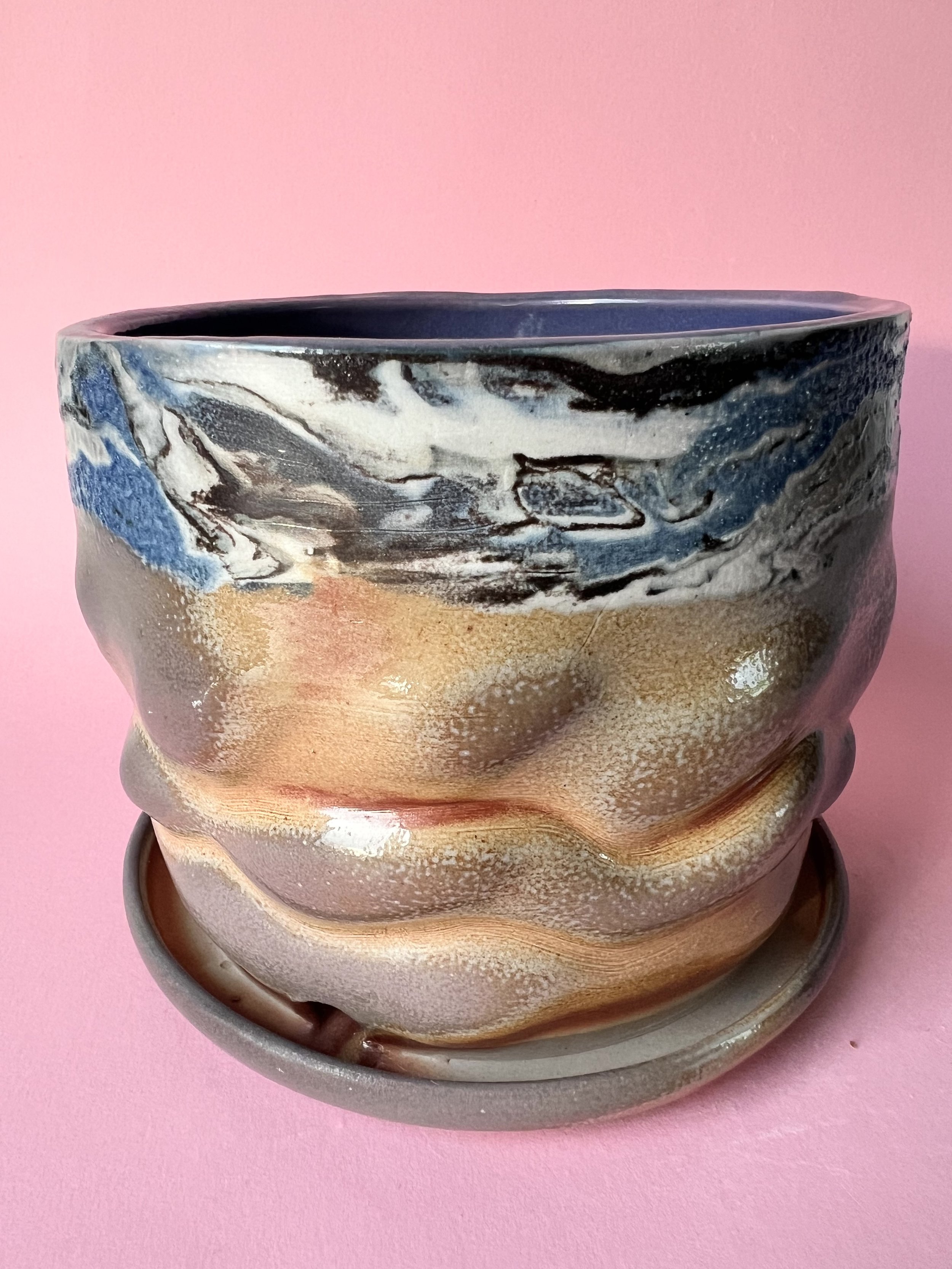 Image 1 of 8
Image 1 of 8

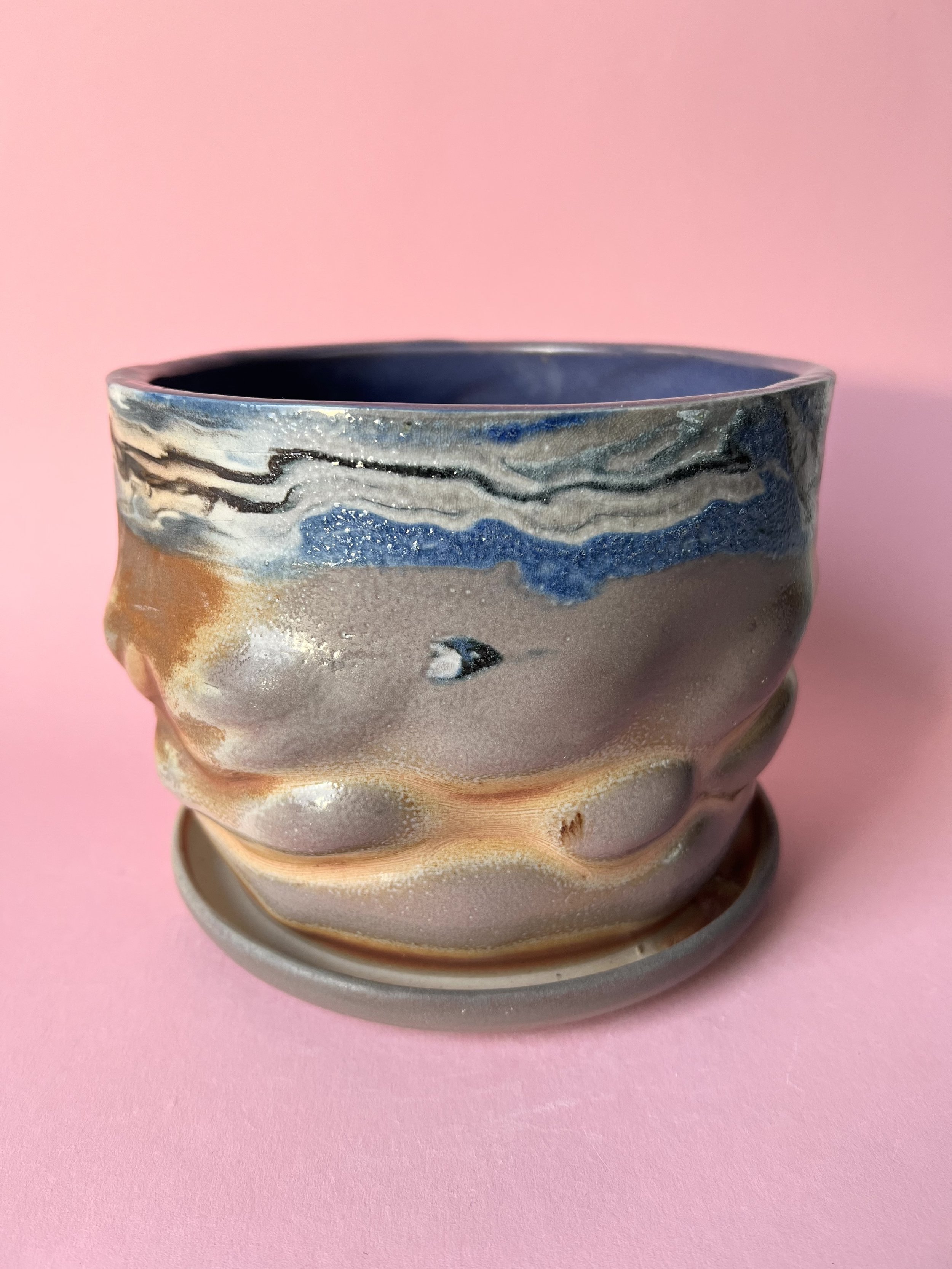 Image 2 of 8
Image 2 of 8

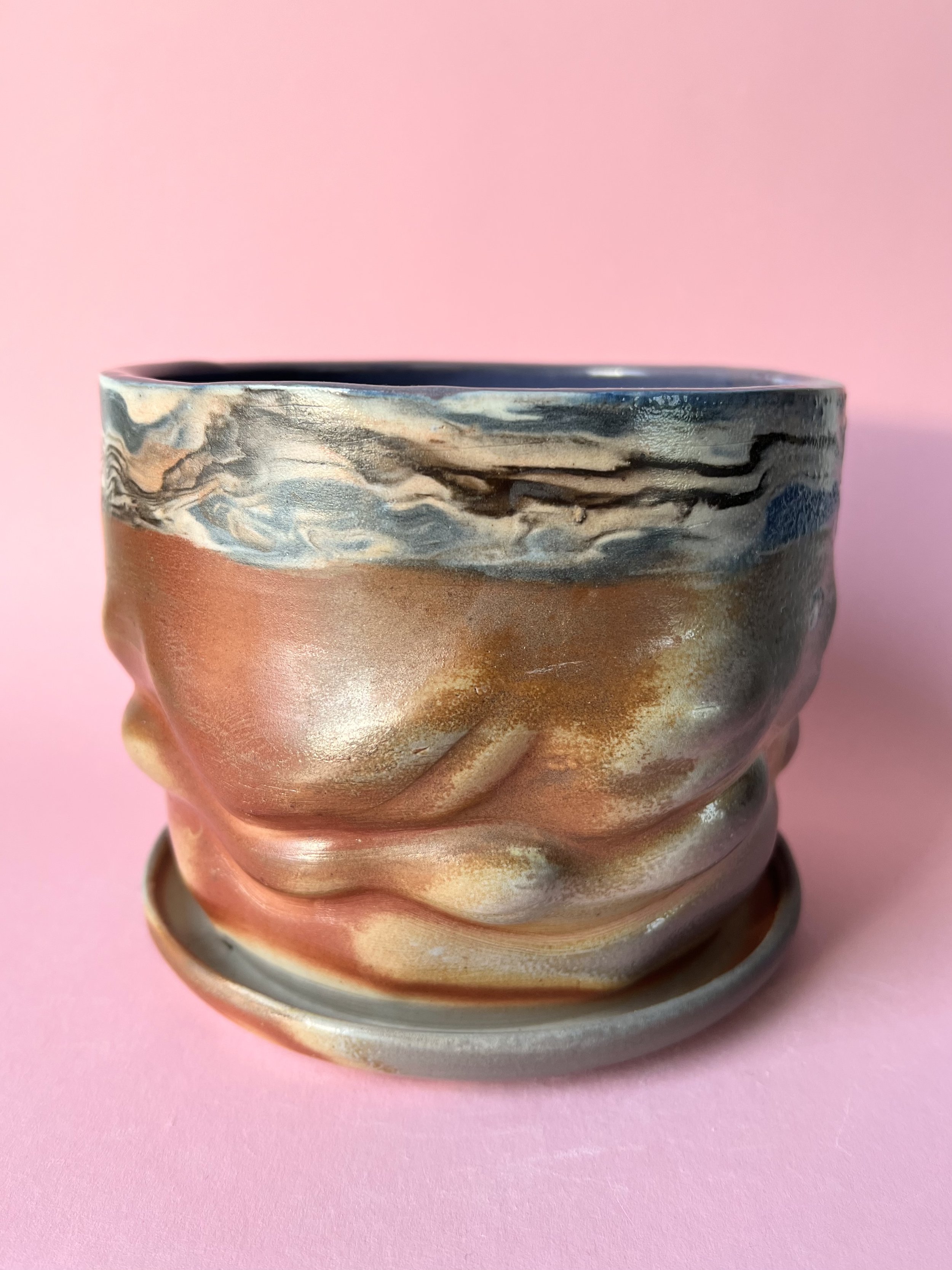 Image 3 of 8
Image 3 of 8

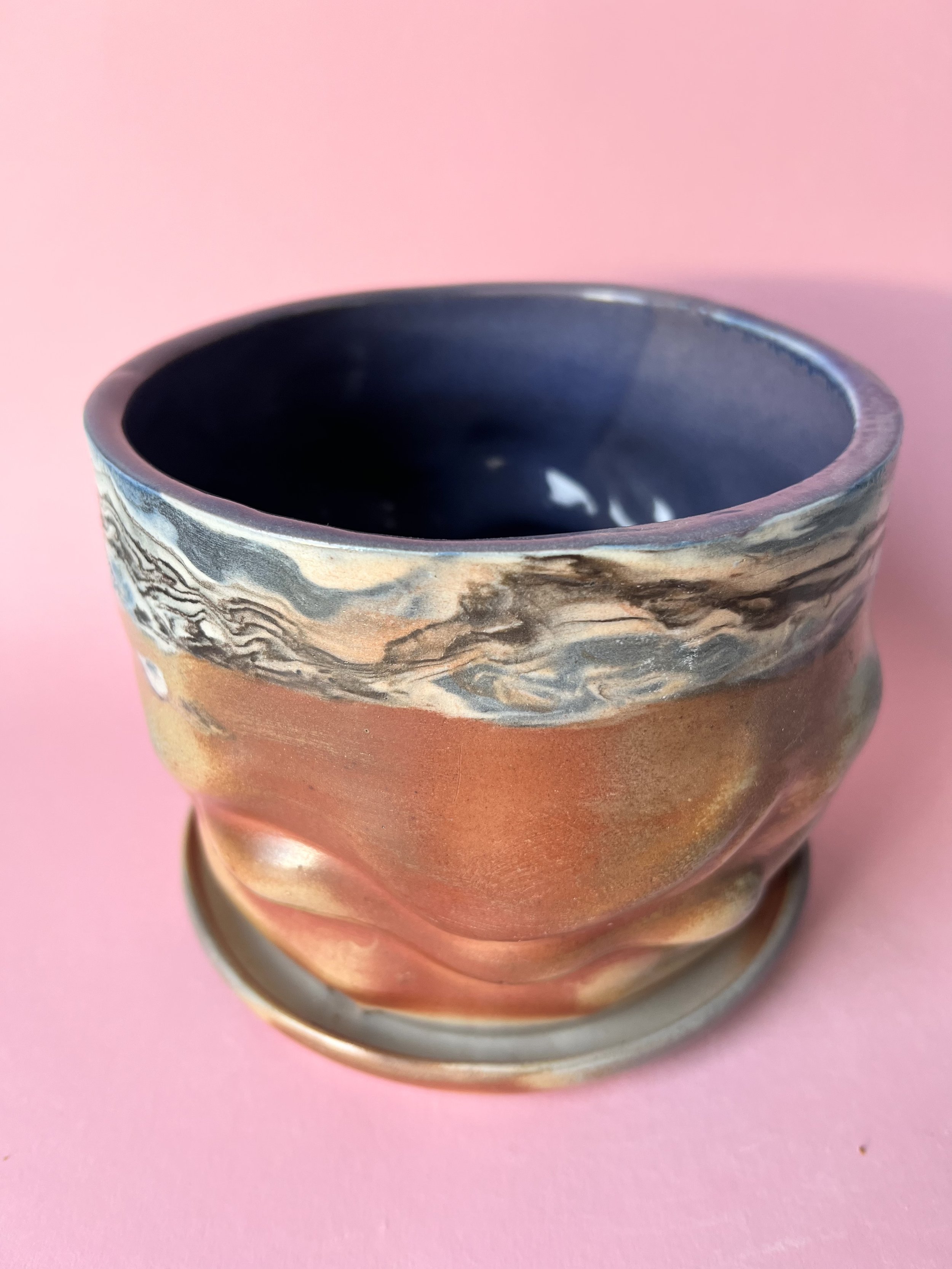 Image 4 of 8
Image 4 of 8

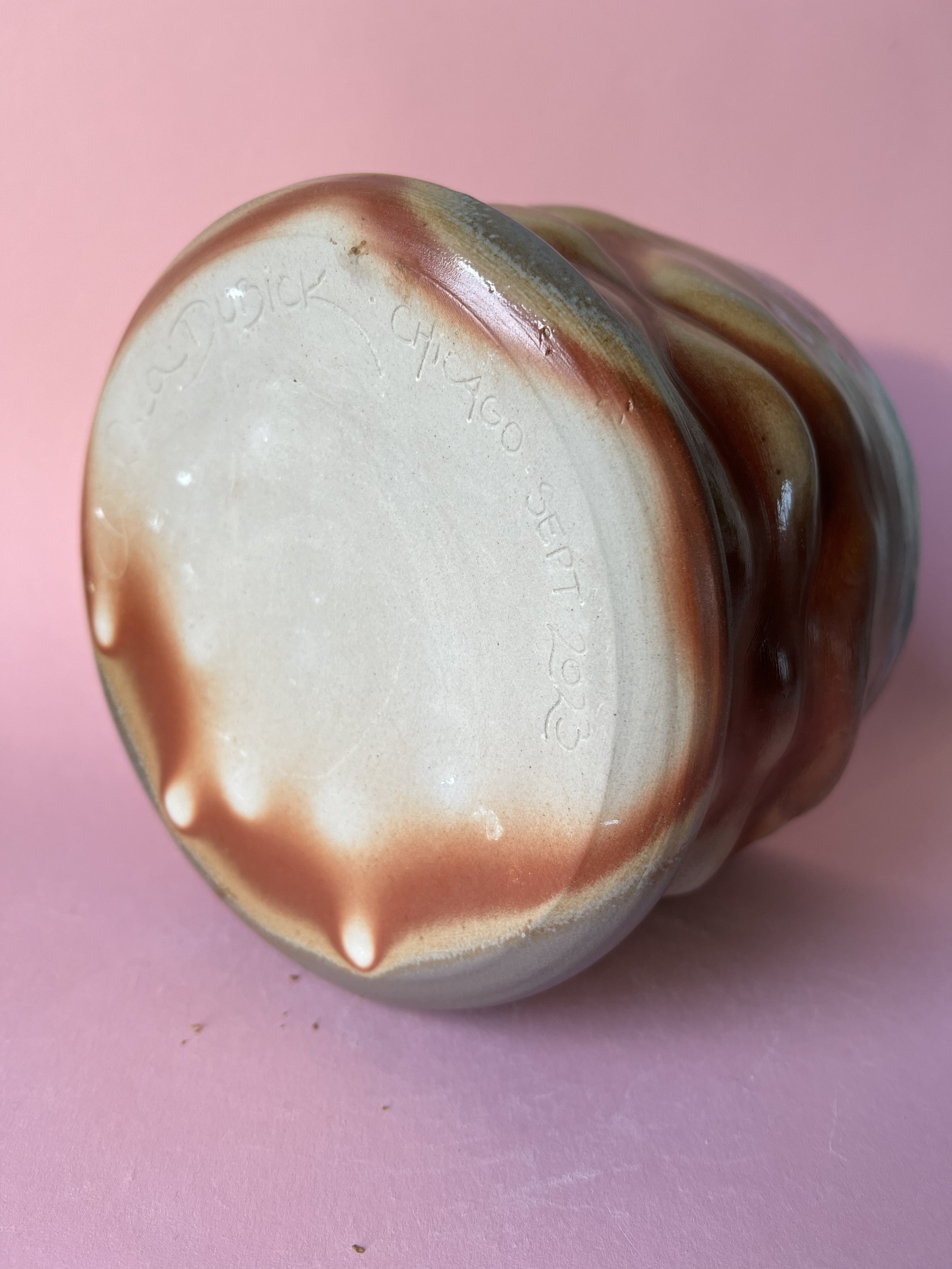 Image 5 of 8
Image 5 of 8

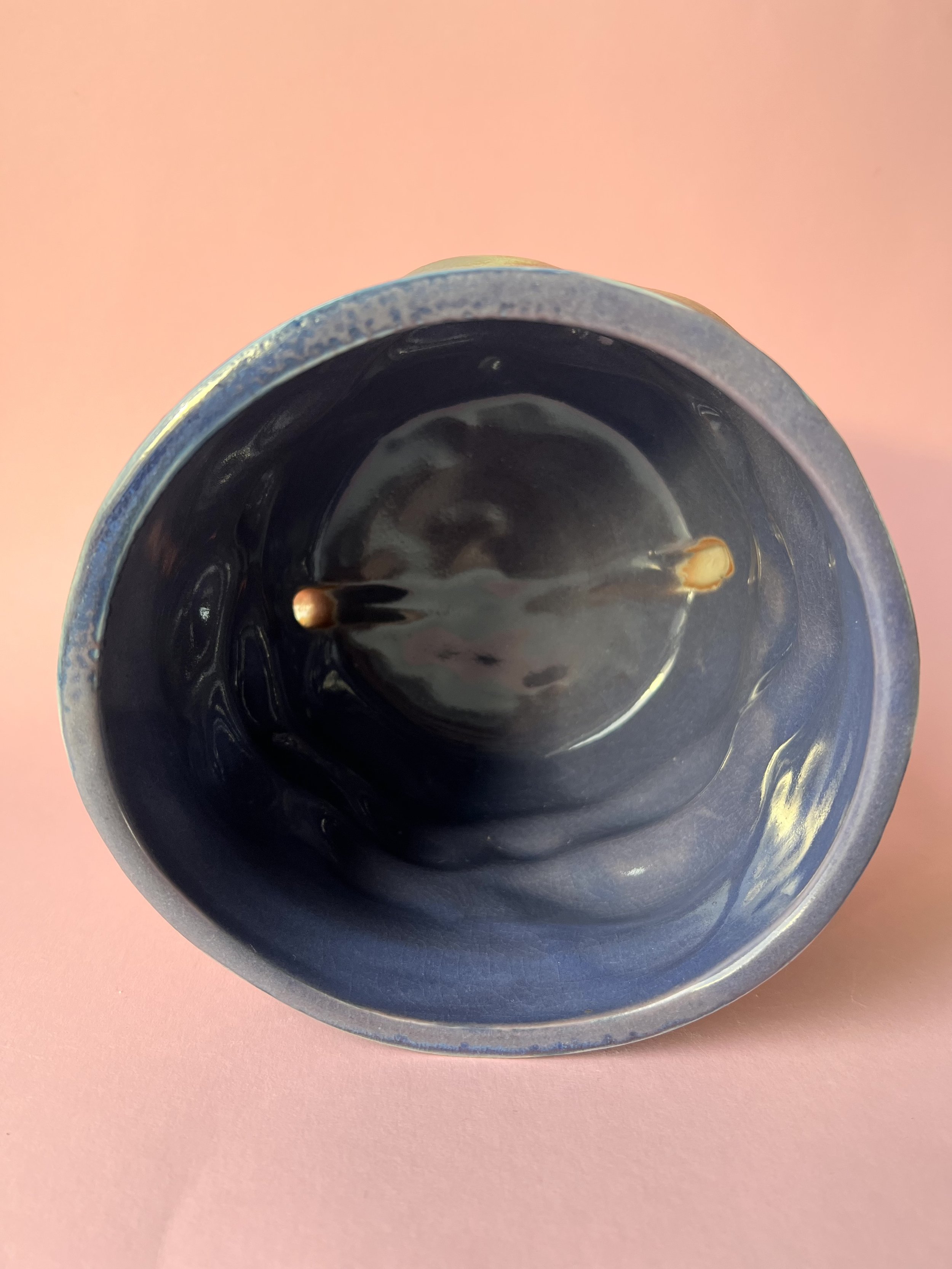 Image 6 of 8
Image 6 of 8

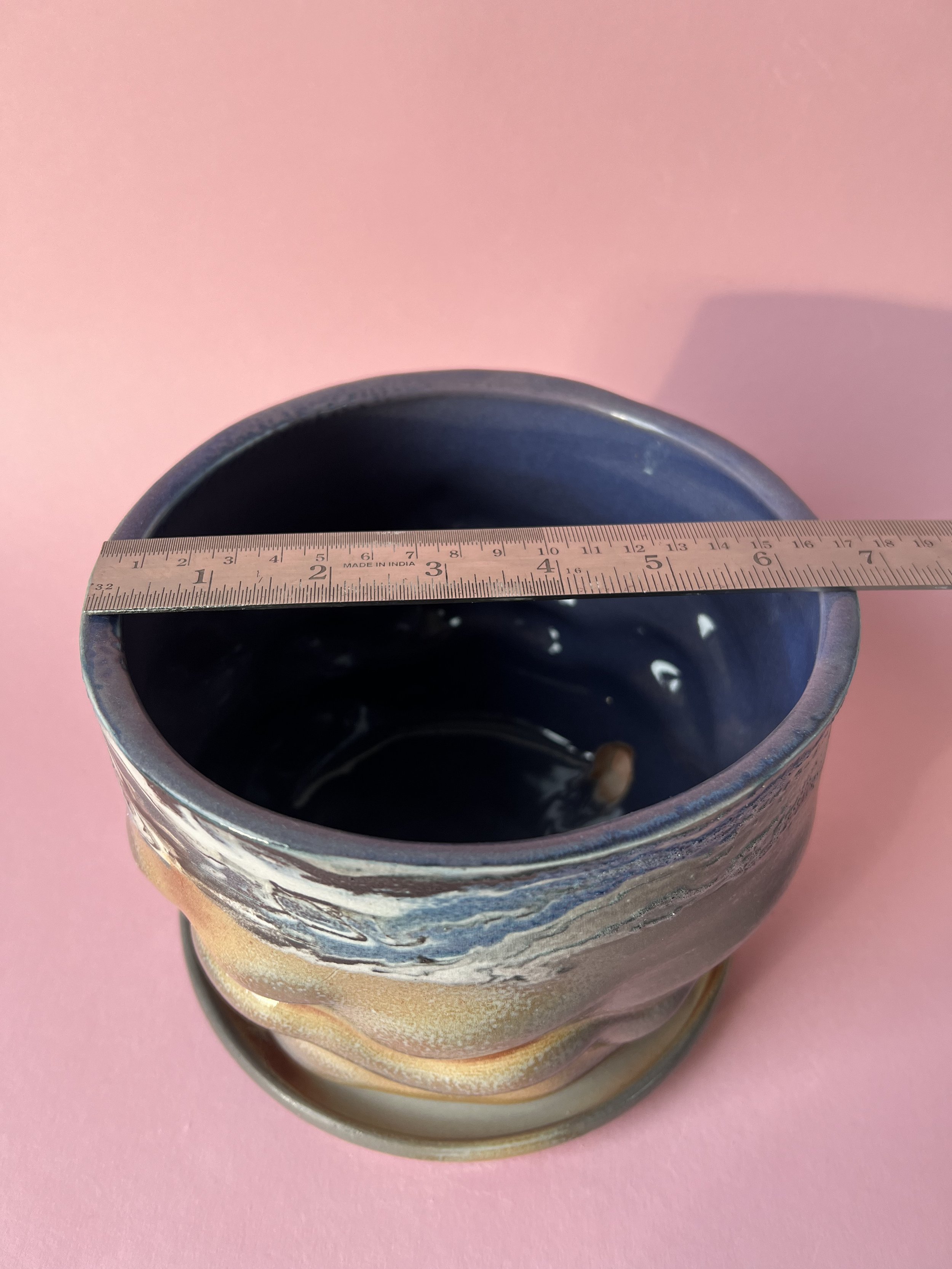 Image 7 of 8
Image 7 of 8

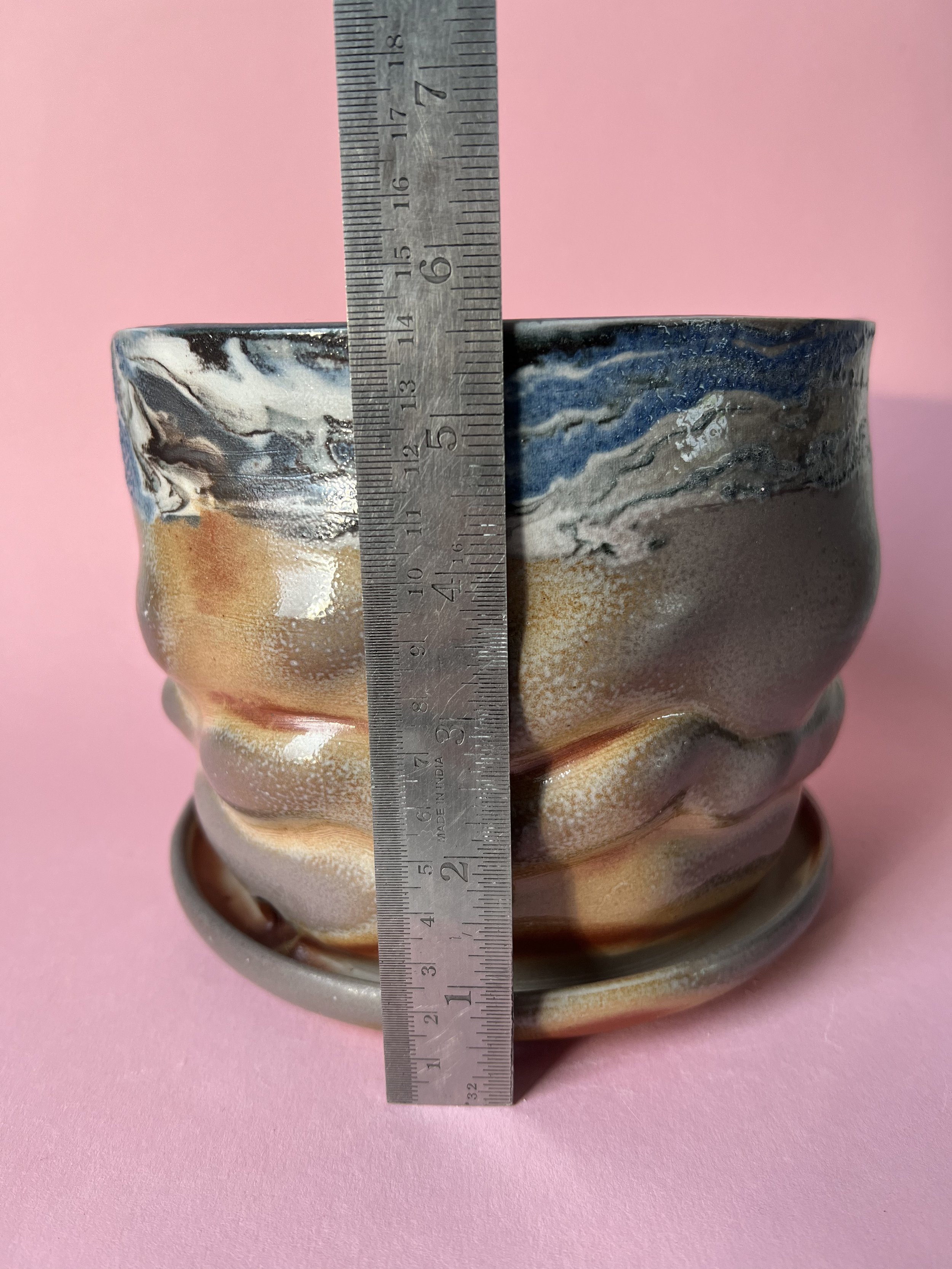 Image 8 of 8
Image 8 of 8









Planter: Marbled Curvy Soda
This curvy planter has it all. It was whell thrown with an attached drainage plate. It has a stoneware body and a marbled coil thrown in on the top. Marbled clay is created by staining porcelain several colors then lightly wedging them together. The body was altered, carved and smoothed in various stages to create these undulating curves. It was then fired in a near-perfect soda firing.
Each soda fired piece is one-of-a-kind as atmospheric firings are unpredictable and can yield stunning results. It takes an enormous amount of time, energy, labor and resources and is usually a community effort. In the soda firing process, soda ash is introduced to the atmosphere of the kiln when it is near peak temperature. The sodium vapor interacts with the clay, slips and glazes to create swirling unpredictable colors that shift and change around the piece. The marks on the bottom are from the wadding used to hold the piece up off the kiln shelf so that glaze drips won’t fuse it to the shelf. They can leave lovely flame marks and are a telltale sign a piece is soda fired, though they don’t always happen, especially in low soda areas of the kiln.
Warping is common with soda fired pieces. Your plants won’t mind.
A perfect gift for people who love art and plants.
This curvy planter has it all. It was whell thrown with an attached drainage plate. It has a stoneware body and a marbled coil thrown in on the top. Marbled clay is created by staining porcelain several colors then lightly wedging them together. The body was altered, carved and smoothed in various stages to create these undulating curves. It was then fired in a near-perfect soda firing.
Each soda fired piece is one-of-a-kind as atmospheric firings are unpredictable and can yield stunning results. It takes an enormous amount of time, energy, labor and resources and is usually a community effort. In the soda firing process, soda ash is introduced to the atmosphere of the kiln when it is near peak temperature. The sodium vapor interacts with the clay, slips and glazes to create swirling unpredictable colors that shift and change around the piece. The marks on the bottom are from the wadding used to hold the piece up off the kiln shelf so that glaze drips won’t fuse it to the shelf. They can leave lovely flame marks and are a telltale sign a piece is soda fired, though they don’t always happen, especially in low soda areas of the kiln.
Warping is common with soda fired pieces. Your plants won’t mind.
A perfect gift for people who love art and plants.
This curvy planter has it all. It was whell thrown with an attached drainage plate. It has a stoneware body and a marbled coil thrown in on the top. Marbled clay is created by staining porcelain several colors then lightly wedging them together. The body was altered, carved and smoothed in various stages to create these undulating curves. It was then fired in a near-perfect soda firing.
Each soda fired piece is one-of-a-kind as atmospheric firings are unpredictable and can yield stunning results. It takes an enormous amount of time, energy, labor and resources and is usually a community effort. In the soda firing process, soda ash is introduced to the atmosphere of the kiln when it is near peak temperature. The sodium vapor interacts with the clay, slips and glazes to create swirling unpredictable colors that shift and change around the piece. The marks on the bottom are from the wadding used to hold the piece up off the kiln shelf so that glaze drips won’t fuse it to the shelf. They can leave lovely flame marks and are a telltale sign a piece is soda fired, though they don’t always happen, especially in low soda areas of the kiln.
Warping is common with soda fired pieces. Your plants won’t mind.
A perfect gift for people who love art and plants.
